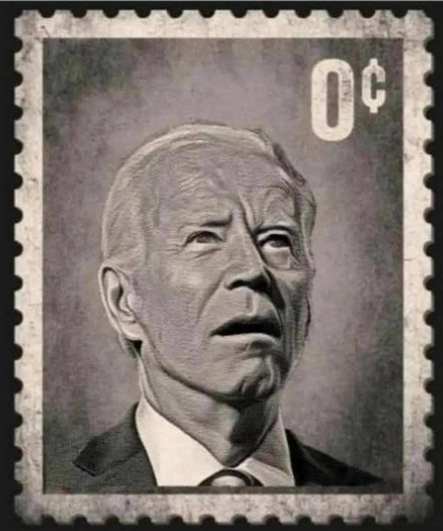Bidenomics At Work
-
The US labor market cooled notably last month as both hiring and wage growth slowed more than economists had expected in April.
.
The US economy added 175,000 new jobs and the unemployment rate rose to 3.9% last month, new data from the Bureau of Labor Statistics showed Friday. Wall Street economists had expected nonfarm payrolls to rise by 240,000 and the unemployment rate to remain at 3.8%, according to Bloomberg data.
.
Wages also rose less than forecast, with average hourly earnings rising 0.2% over last month and 3.9% over the last year. Economists had expected to see a monthly jump of 0.3% in April and a 4% rise over last year.
.
Friday's report also showed February's job growth was revised down — to a gain of 236,000 nonfarm payroll jobs from the 270,000 previously reported — while March's report was revised up to job gains of 315,000 from the 303,000 initially reported.
...In reaction to the weaker-than-expected jobs report, the stock market went UP in anticipation of the Federal Reserve Board cutting interest rates. It's as if Wall Street really doesn't like a strong economy.
-
The US labor market cooled notably last month as both hiring and wage growth slowed more than economists had expected in April.
.
The US economy added 175,000 new jobs and the unemployment rate rose to 3.9% last month, new data from the Bureau of Labor Statistics showed Friday. Wall Street economists had expected nonfarm payrolls to rise by 240,000 and the unemployment rate to remain at 3.8%, according to Bloomberg data.
.
Wages also rose less than forecast, with average hourly earnings rising 0.2% over last month and 3.9% over the last year. Economists had expected to see a monthly jump of 0.3% in April and a 4% rise over last year.
.
Friday's report also showed February's job growth was revised down — to a gain of 236,000 nonfarm payroll jobs from the 270,000 previously reported — while March's report was revised up to job gains of 315,000 from the 303,000 initially reported.
...In reaction to the weaker-than-expected jobs report, the stock market went UP in anticipation of the Federal Reserve Board cutting interest rates. It's as if Wall Street really doesn't like a strong economy.
-
The US labor market cooled notably last month as both hiring and wage growth slowed more than economists had expected in April.
.
The US economy added 175,000 new jobs and the unemployment rate rose to 3.9% last month, new data from the Bureau of Labor Statistics showed Friday. Wall Street economists had expected nonfarm payrolls to rise by 240,000 and the unemployment rate to remain at 3.8%, according to Bloomberg data.
.
Wages also rose less than forecast, with average hourly earnings rising 0.2% over last month and 3.9% over the last year. Economists had expected to see a monthly jump of 0.3% in April and a 4% rise over last year.
.
Friday's report also showed February's job growth was revised down — to a gain of 236,000 nonfarm payroll jobs from the 270,000 previously reported — while March's report was revised up to job gains of 315,000 from the 303,000 initially reported.
...In reaction to the weaker-than-expected jobs report, the stock market went UP in anticipation of the Federal Reserve Board cutting interest rates. It's as if Wall Street really doesn't like a strong economy.
@Axtremus said in Bidenomics At Work:
The US labor market cooled notably last month as both hiring and wage growth slowed more than economists had expected in April.
.
The US economy added 175,000 new jobs and the unemployment rate rose to 3.9% last month, new data from the Bureau of Labor Statistics showed Friday. Wall Street economists had expected nonfarm payrolls to rise by 240,000 and the unemployment rate to remain at 3.8%, according to Bloomberg data.
.
Wages also rose less than forecast, with average hourly earnings rising 0.2% over last month and 3.9% over the last year. Economists had expected to see a monthly jump of 0.3% in April and a 4% rise over last year.
.
Friday's report also showed February's job growth was revised down — to a gain of 236,000 nonfarm payroll jobs from the 270,000 previously reported — while March's report was revised up to job gains of 315,000 from the 303,000 initially reported.
...In reaction to the weaker-than-expected jobs report, the stock market went UP in anticipation of the Federal Reserve Board cutting interest rates. It's as if Wall Street really doesn't like a strong economy.
My understanding on economy (which I admit is minimum), is that the poor jobs reports indirectly says that inflation will be slowing (less salary pressure increase, etc.). Which, in the long term, is what is wanted. @jon-nyc is probably better to respond.
-
https://www.bls.gov/news.release/empsit.nr0.htm
Total nonfarm payroll employment increased by 272,000 in May, and the unemployment rate changed
little at 4.0 percent ...In May, average hourly earnings for all employees on private nonfarm payrolls increased by 14 cents, or 0.4 percent, to $34.91. Over the past 12 months, average hourly earnings have increased by 4.1 percent. In May, average hourly earnings of private-sector production and nonsupervisory employees
increased by 14 cents, or 0.5 percent, to $29.99. ... -
LOL, @George-K , can you find that post about the adjustments that just happened?
-
LOL, @George-K , can you find that post about the adjustments that just happened?
@LuFins-Dad zerohedge usually comes out with that info in a timely basis. But not yet today.
-
@LuFins-Dad zerohedge usually comes out with that info in a timely basis. But not yet today.
@George-K said in Bidenomics At Work:
@LuFins-Dad zerohedge usually comes out with that info in a timely basis. But not yet today.
I thought I saw something that showed they just had a MASSIVE revision for December and March.
-
He gets community noted every time he posts that
-
Black and Hispanic unemployment is at a record low
There have never been more Black and Hispanic Americans in the workforce, Friday’s Labor Department job report showed.
The jobless rate for Hispanics hit a record low of 3.9% in September, while African Americans maintained its lowest rate ever, 5.5%.
Oh, wait. That was from 2019. My bad...
Jobless rates rise in May for all racial groups except white Americans
White unemployment remained at 3.5% last month, making the demographic group the only one that didn’t experience a rise in jobless rates from April to May. It also went against the overall unemployment rate, which edged higher to 4% from 3.9%.
Meanwhile, the jobless rate for Black Americans rose to 6.1% from 5.6%. For Asian and Hispanic workers, respectively, it rose to 3.1% from 2.8%, and to 5% from 4.8%.
-
About doing "multiple gig jobs" vs. "one full time job," while "one full time job" is easier and more more predictable day-to-day, the "multiple gig jobs" model is arguably lower risk long term because you won't be completely out of work and out of income because an employer goes bust or terminate you all of a sudden.
Yeah, the Industrial Revolution somehow led to an abundance of jobs that are steady year round, it lifted the standard of living for the masses. It's good to have "one steady full time job", it's good to not have to worry about what to do with your next eight hours (because your employer planned it out for you). But why would one expect that model to last forever?
-
@Jolly said in Bidenomics At Work:
Gig jobs do not normally come with benefits.
That we need to fix with single payer universal healthcare. Single payer universal healthcare is the right solution regardless of whether the labor pool is mostly “full time” or mostly “gig” workers.
-
@Jolly said in Bidenomics At Work:
Gig jobs do not normally come with benefits.
That we need to fix with single payer universal healthcare. Single payer universal healthcare is the right solution regardless of whether the labor pool is mostly “full time” or mostly “gig” workers.
@Axtremus said in Bidenomics At Work:
@Jolly said in Bidenomics At Work:
Gig jobs do not normally come with benefits.
That we need to fix with single payer universal healthcare. Single payer universal healthcare is the right solution regardless of whether the labor pool is mostly “full time” or mostly “gig” workers.
Great, I nominate you to be the single payer.
-
@Jolly said in Bidenomics At Work:
Gig jobs do not normally come with benefits.
That we need to fix with single payer universal healthcare. Single payer universal healthcare is the right solution regardless of whether the labor pool is mostly “full time” or mostly “gig” workers.
-
@Axtremus said in Bidenomics At Work:
@Jolly said in Bidenomics At Work:
Gig jobs do not normally come with benefits.
That we need to fix with single payer universal healthcare. Single payer universal healthcare is the right solution regardless of whether the labor pool is mostly “full time” or mostly “gig” workers.
Great, I nominate you to be the single payer.
@LuFins-Dad said in Bidenomics At Work:
@Axtremus said in Bidenomics At Work:
@Jolly said in Bidenomics At Work:
Gig jobs do not normally come with benefits.
That we need to fix with single payer universal healthcare. Single payer universal healthcare is the right solution regardless of whether the labor pool is mostly “full time” or mostly “gig” workers.
Great, I nominate you to be the single payer.

